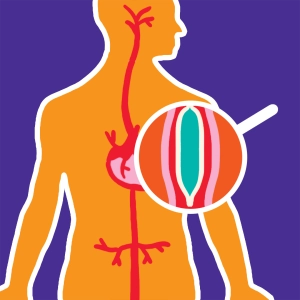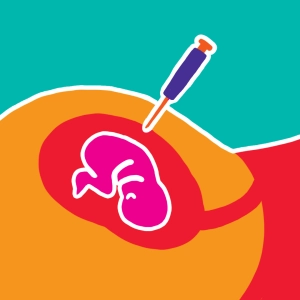
The life cycle of HIV
Summary
The HIV (Human Immunodeficiency Virus) is a retrovirus that causes AIDS (Acquired Immune Deficiency Syndrome). The HIV infects certain types of cells of the immune system inside of which it replicates itself. With time, the ability of the immune system to ward off infections weakens and opportunistic diseases flare up.
Click on [play] or [pause] to play or stop the animation.
Learning objectives
-
To understand how the HIV replicates itself inside the host cell.
- To know the key role of the viral structures involved in the virus’s life cycle.
Learn more
Once in the bloodstream, the HIV starts its life cycle which comprises a series of steps :
-
Attachment to specific immune cells : this process is achieved by the recognition of cell surface markers (CD4 and a coreceptor) of the host cells by the viral gp 120 marker. This interaction allows the virus to get inside the host cells (helper T cells and macrophages),
-
Entry into the host cell by endocytosis,
-
Retrotranscription of the single-stranded viral RNA into a double-stranded viral DNA after the viral capsid has been shed. This step is catalysed by a viral enzyme called reverse transcriptase.
-
Integration of the newly formed viral DNA into the host cell’s DNA. This step requires an other viral enzyme known as integrase.
-
Transcription of the viral DNA into viral RNA. These RNA can serve as the genome for new viruses and can de translated to produce viral proteins,
-
Translation of the viral RNA by host cell’s ribosomes in order to form viral proteins,
-
Maturation of the viral proteins into functional ones thanks to another viral enzyme called protease.
-
Assembly of the viral components below the host cell’s plasma membrane.
-
Release of the newly formed HIV particles by exocytosis.
The life cycle then repeats itself when newly formed HIV particles encounter new host cells.






